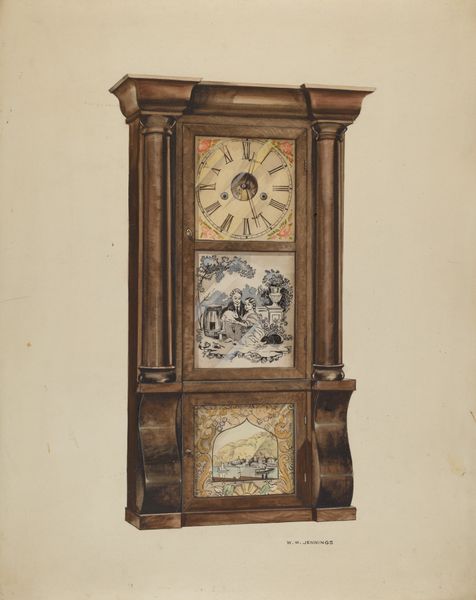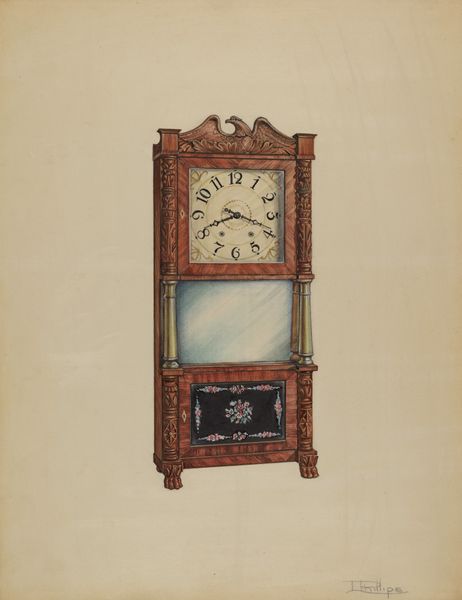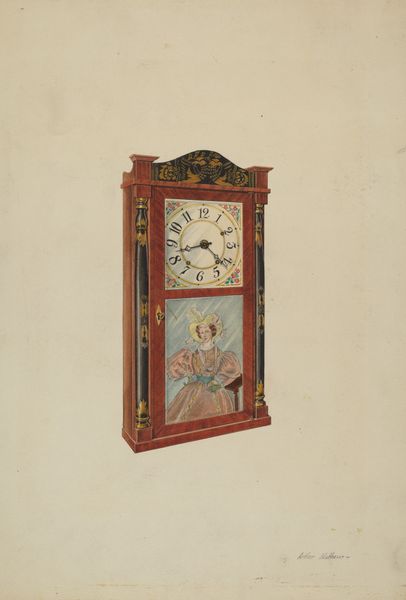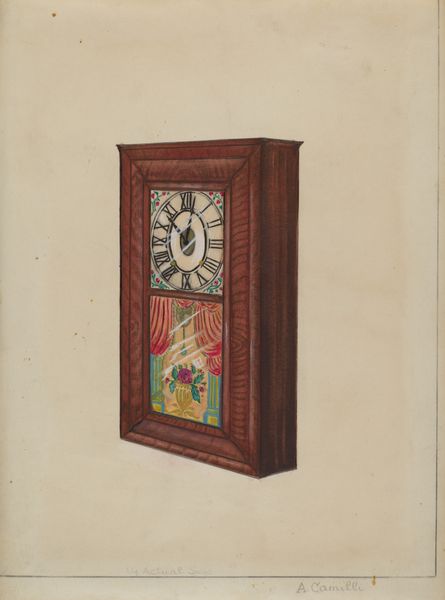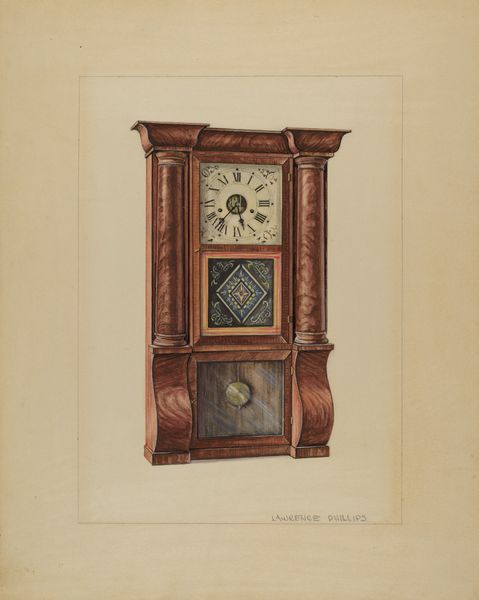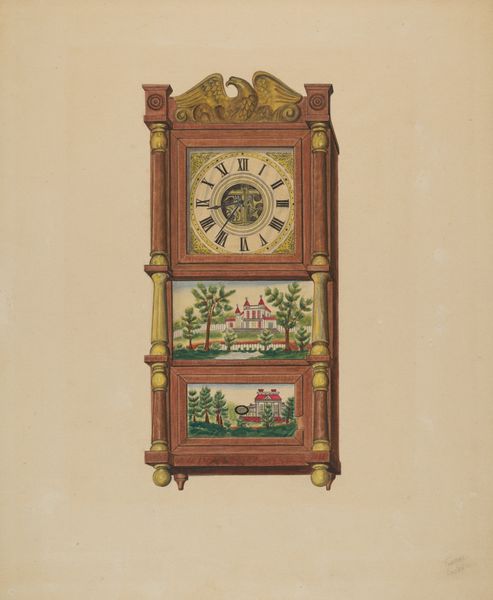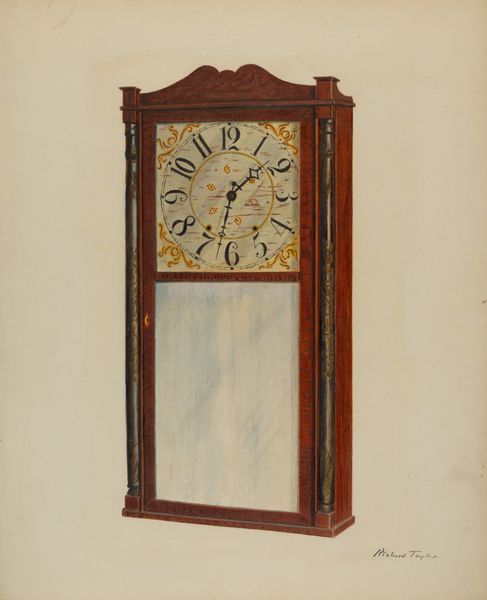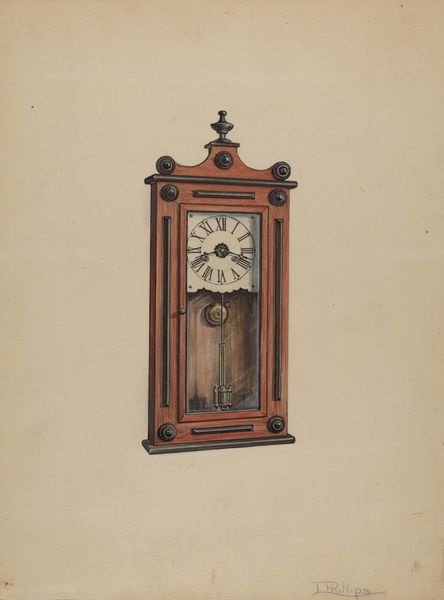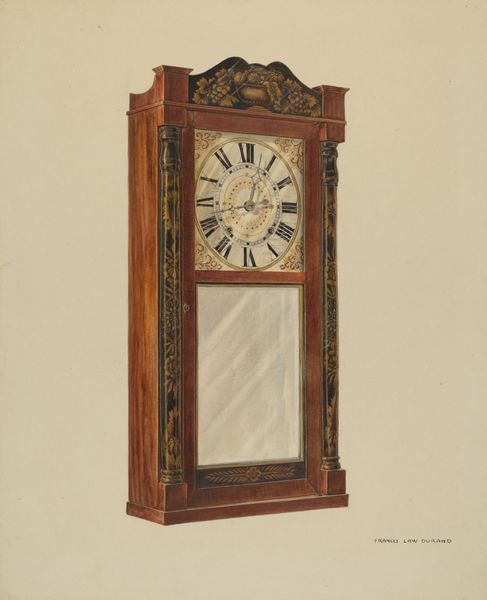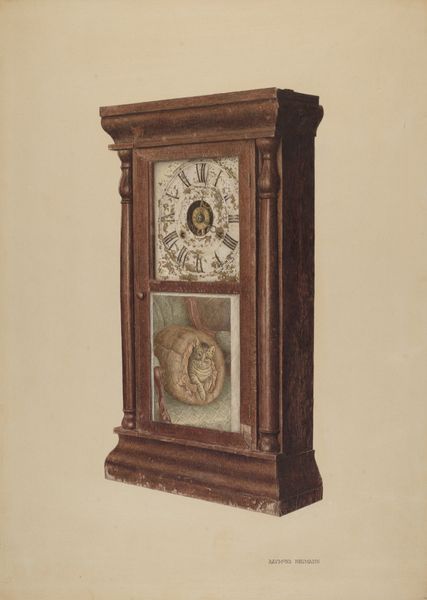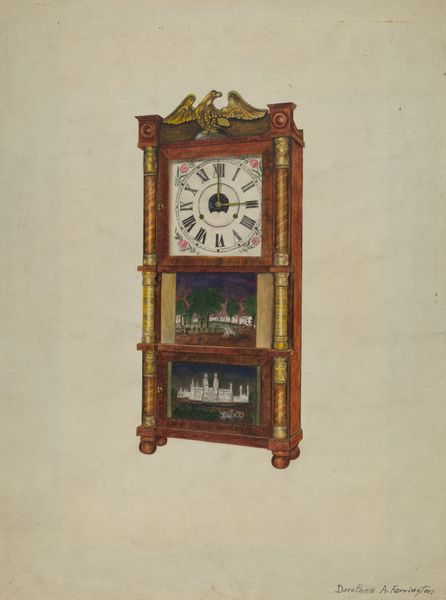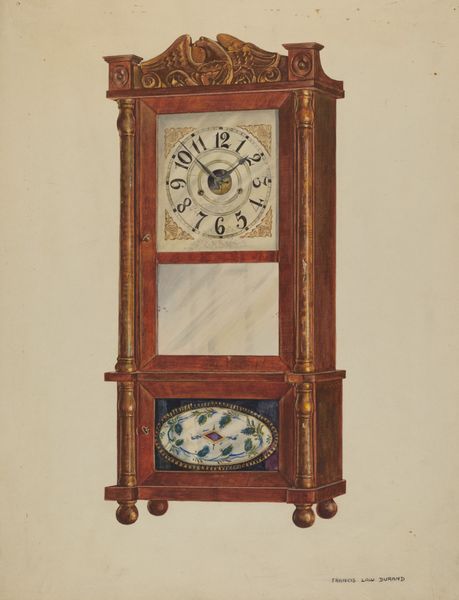
drawing, painting
#
drawing
#
painting
#
academic-art
#
watercolor
Dimensions: overall: 45.7 x 35.7 cm (18 x 14 1/16 in.) Original IAD Object: 3 5/16"deep, 12 7/16"wide; 17 5/16"high
Copyright: National Gallery of Art: CC0 1.0
Curator: This watercolor painting of a "J.C. Brown Clock," believed to be created around 1940, presents an interesting piece of Americana. William O. Fletcher, the artist, really captured its aesthetic. What are your initial impressions? Editor: Well, I am immediately struck by the geometry and composition. The painting balances the intricate details of the clock with an almost austere formal presentation of the flat dimensions—the way that the floral embellishments provide an excellent textural and chromatic counterpoint, creating an interesting dialectic tension, but what cultural significance do you see here? Curator: It speaks to the proliferation of timekeeping devices in American homes, but specifically in working class spaces, during that period. It suggests a focus on labor and organization within domestic settings, highlighting the importance of punctuality within capitalist structures as early as the late 19th century. Editor: I see it also. In its geometry, there’s a rhythmic repetition of shape—circular dial over an ellipse pattern below, framed within a rectangular structure—that visually articulates those underlying, perhaps constraining, influences. Notice, also, how the light plays on the surfaces to direct the eye! Curator: Exactly, and Fletcher’s meticulous documentation points to a cultural fascination with these items, beyond just their practical function. It shows the values of thriftiness and aestheticism; it showcases an ideal form of art in daily life. The artwork presents not only an aesthetic object, but it carries these cultural and historic symbols. Editor: It’s a wonderful interplay of cultural context and form. You've made me think of time a bit differently here. Curator: And your analysis encourages me to reconsider the lasting social role and our responsibility toward this kind of beautiful piece.
Comments
No comments
Be the first to comment and join the conversation on the ultimate creative platform.
